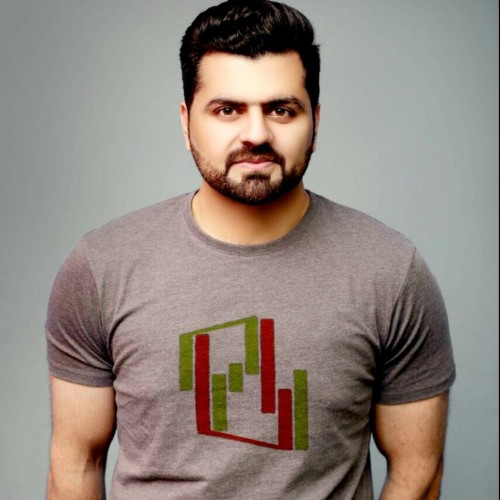
LIKE HIS fellow Victorian beancounters, Edwin Waterhouse made his name in part by unearthing frauds perpetrated during the railway mania that gripped late-19th-century Britain. These days the accounting-and-consulting powerhouse that traces its history to his successful sleuthing more often makes news for failing to detect financial malfeasance—or for engaging in mischief itself. Between 2010 and 2023 it faced around $450m in fines and settlements related to botched audits and other misconduct in various countries. The firm, which now goes by PwC rather than PricewaterhouseCoopers, at least spares Edwin’s memory the indignity of having his name openly tied to the mess.
The latest stain on PwC’s reputation came on September 13th. China’s authorities slapped its affiliate in the country, PwC Zhong Tian, with a record $62m fine and barred it from doing business for six months. Its staff, regulators said, “concealed or even condoned fraud” in the accounts of Evergrande, a property developer which inflated its revenues by nearly $80bn in the two years before its collapse in 2021.
In anticipation of a ban, big mainland clients have been fleeing PwC’s “assurance” practice, as auditing is known in the industry. Some may never be reassured enough to come back. The fallout could spread to Hong Kong, where Evergrande was listed and whose accounting watchdog is carrying out its own investigation. PwC has reportedly downed shovels on a new $140m Chinese campus for “building trust in leadership”, possibly concluding that it might be wise to rebuild trust in its brand first.
Mohamed Kande, PwC’s newish global boss, admitted that its work for Evergrande “fell well below our high expectations and was completely unacceptable”. Six partners and five other staff have been sacked, the top-ranking partner in China has stepped down and a crisis manager from PwC’s head office in London has been parachuted in to replace him.
If only that were the end of it. Such mea culpas are becoming distressingly common in the professional-services business, which is dominated by PwC and its three giant rivals: Deloitte, EY and KPMG. Since 2019 the “big four” have on at least 28 occasions found themselves on the hook for multimillion-dollar fines and settlements related to behaviour in the past decade or so. In the five years before 2019 the like-for-like figure was four.
One explanation is that regulators are becoming more watchful. If so, about time. Yet the profusion of scandals also coincides with a period of rapid expansion in the quartet’s size and reach. Growth may be putting intolerable strain on the franchise-like model adopted by the big four, which have long functioned as networks of independent national partnerships. That structure makes it impossible for Mr Kande and his counterparts to supervise their sprawling empires.
The big four’s sheer bigness is something to behold. Together they check the books for nearly all American and European blue chips, as well as offering advice on dealmaking, digitisation and plenty besides. Their collective fees have ballooned from $134bn in 2017 to $203bn last year. In the same period their combined ranks swelled by 500,000 employees, to 1.5m. In 2023 alone PwC hired 130,000 people, more than its total head count in 2002. And it bid farewell to 94,000. Lots of young hires just want a reputable employer on their CV and to move on after a year or two. With so many coming and going, fewer have a long-term stake in ensuring that the firm’s reputation remains intact.
Staff face pressure to cut corners in other ways. Fresh-faced accountants can expect to earn around $60,000 a year at the big four in America, compared with around $100,000 for a young management consultant at prestigious strategy shops such as McKinsey, Bain or BCG. Yet that difference narrows substantially once you become a partner, meaning there are big gains to doing whatever it takes to climb up the greasy pole. “You don’t make partner because you are a good auditor. You make partner because you close deals,” recalls a former big-four employee in China.
Such misalignments are especially acute in the rough-and-tumble markets of the emerging world. Laxer corporate oversight means more temptation for bad behaviour. Employee churn also tends to be higher, because workers are readier to jump ship to secure even a modest pay rise. With little management from the top, these problems could become widespread as a greater share of the firms’ business comes from poor countries. Around two-thirds of the corporate entities that make up EY’s global network reside outside the rich world. “It’s a wonder there aren’t more scandals,” says Tom Rodenhauser of Kennedy Intelligence, a research firm.
Split attention
Adopting a more top-down structure is, alas, out of the question for the big four: most countries have laws that require accountancies to be domiciled locally and owned by citizens. Still, the giants could simplify their businesses by hiving off the fast-growing consulting arms, as EY attempted last year before some American partners got cold feet. Such a split has a commercial logic: it would allow the consultants to raise the pots of money needed for technologies such as artificial intelligence. It would also allow the global leadership of the rump assurance networks to focus single-mindedly on audit quality. Splitting apart will not be easy, as EY’s experience shows. But it is probably inevitable.
In the meantime, another way to beef up oversight is to get serious outsiders onto the firms’ boards. That requires regulators to relax rules barring auditors from enlisting independent directors with ties to their clients. Given that the big four serve the world’s finest companies, such rules exclude just about any business figure of note. That is no way to run a company—or audit one. ■
If you want to write directly to Schumpeter, email him at schumpeter@economist.com
To stay on top of the biggest stories in business and technology, sign up to the Bottom Line, our weekly subscriber-only newsletter.


















